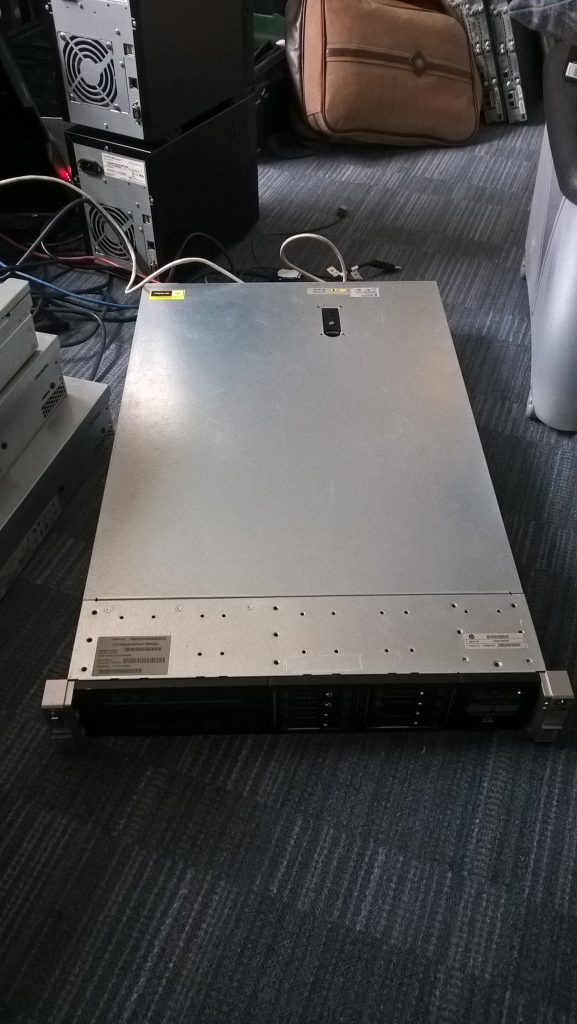Finding the Perfect Replacement for Your Cordless Phone Battery: A Comprehensive Guide
Introduction
In the age of smartphones, it might come as a surprise that many households still rely on cordless phones for their day-to-day communication. These devices provide the reliability of a landline network and the mobility we’ve come to expect from modern gadgets. However, like all electronic devices, cordless phones are not without their quirks and challenges. One such problem, commonly faced by users, is finding the right battery replacement. In this article, we’ll delve into the intricacies of dealing with cordless phone batteries, using the example of a specific issue faced with an AT&T EL52313 phone.
The Cordless Phone Conundrum
The situation presented involves an AT&T EL52313 cordless phone where the user is struggling with a problematic battery setup. The primary concern? The phone’s battery depletes rapidly when unplugged due to the absence of a ringer switch, and finding a safe, reliable replacement seems daunting.
The phone uses a 2.4V 300mAh BT162342 twin battery set. Many users encounter difficulties in sourcing a replacement that doesn’t pose a fire hazard, an understandable concern given the numerous reports of battery malfunctions and recalls over the years. Therefore, it’s crucial to explore various alternatives and ensure safety while doing so.
Understanding Rechargeable Batteries
Before diving into replacements, it’s essential to understand the types of batteries commonly used in cordless phones:
-
Nickel-Cadmium (Ni-Cd) Batteries: Once prevalent due to their reliability and long life cycles, these have largely fallen out of favor because they contain toxic heavy metals and suffer from memory effect, which can severely impact their performance.
-
Nickel-Metal Hydride (Ni-MH) Batteries: These have become the standard due to their higher capacity and reduced memory effect relative to Ni-Cd batteries. However, they do require proper handling to maximize their lifespan.
-
Lithium-Ion (Li-Ion) Batteries: Known for their lightweight and higher energy density, Li-Ion batteries are common in portable electronics. However, their use in cordless phones is limited due to cost and voltage incompatibility with most phone systems designed for Ni-MH or Ni-Cd batteries.
Safety Concerns: Fire Hazards and Battery Life
When seeking out replacement batteries, safety is paramount. The fear of a fire hazard is not unwarranted. Improperly manufactured batteries can overheat, swell, or even catch fire. A few key considerations to mitigate risks include:
-
Purchasing from Reputable Vendors: Always buy batteries from recognized brands and trusted retailers. Counterfeit batteries might be cheaper but can compromise safety standards.
-
Checking Battery Certifications: Look for products that meet industry certifications such as UL (Underwriters Laboratories) to ensure they have been tested for safety standards.
-
Proper Storage and Disposal: Batteries should be stored in cool, dry places and disposed of at designated recycling centers to prevent leaking or potential combustion.
Exploring Low Self-Discharge Battery Options
One possible solution to the problem is finding a battery with a lower self-discharge rate. Low Self-Discharge (LSD) Ni-MH batteries retain most of their charge for extended periods when not in use, making them an appealing alternative for devices like cordless phones.
-
LSD Ni-MH Batteries: Brands like Eneloop offer LSD Ni-MH batteries that, while primarily used for other devices, might offer a custom solution if you’re willing to solder them into place. Although typically available in standard sizes like AA or AAA, with some ingenuity, they can be adapted.
-
Custom Solutions: For those comfortable with electronics, purchasing batteries that fit the voltage and capacity needs and custom soldering them into a compatible battery pack might be necessary. It’s essential, though, to follow safety guidelines and ensure proper connections to avoid any damage or injury.
Sourcing a Replacement: Steps to Success
For users looking to source a replacement battery for the AT&T EL52313 cordless phone or similar models, here are suggested steps:
-
Research and Identify Needs: Determine the voltage, capacity, and dimensions required for the replacement battery. Ensure the physical fit before purchase to avoid compatibility issues.
-
Vendor and Product Review: Visit trusted ecommerce platforms or electronics stores and read reviews. Investigate both the vendor’s reliability and the specific product’s performance.
-
Consider Upgrades: If frequently facing issues with rapid discharge, consider battery upgrades with higher capacity, provided they can fit the phone and do not exceed voltage specifications.
-
Consult Online Communities and Forums: Users on forums like Reddit often share their experiences and recommendations, which can provide insights into what’s worked in similar cases.
-
Professional Assistance: If uncertain about handling electronics, consult with a professional or contact the phone manufacturer’s support for guidance on suitable replacements.
Conclusion
While it can be frustrating to deal with battery issues in cordless phones, understanding the types of batteries available and how to safely source replacements can help mitigate these challenges. Opting for low self-discharge alternatives and ensuring purchases from reputable sources can extend the life of your cordless phone and enhance user experience. By taking these steps, you ensure that this essential household communication device remains reliable and functional for years to come.
Navigating the world of cordless phone batteries requires a blend of research, vigilance, and a willingness to adapt and explore new solutions. With the right approach, however, maintaining the efficiency and functionality of your cordless phone is within reach.
Share this content:




Response
It’s essential to address the issue of battery performance in cordless phones, especially when dealing with rapid depletion and the absence of a ringer switch. The AT&T EL52313 utilizes a specific battery model that many users might find challenging to replace safely. Here are some valuable insights and recommendations regarding battery management and replacement:
1. Battery Specifications
Always ensure that any replacement battery matches the original specifications. The 2.4V, 300mAh BT162342 configuration is crucial for proper functionality. Mismatched voltages can lead to inefficient performance or even damage.
2. Low Self-Discharge Options
As you’ve mentioned, looking into Low Self-Discharge (LSD) Ni-MH batteries like Eneloop is a great idea. These batteries retain charge much longer than standard Ni-MH options, which could significantly improve the usability of your cordless phone. Just make sure to handle any soldering with care to maintain safety!
3. Safety Standards
Regarding safety, it’s vital to prioritize batteries that comply with safety certifications (such as UL). This minimizes the risk of fire hazards associated with poor-quality batteries. Always buy from reputable retailers to ensure quality.
4. Community Insight
Engaging with online forums is an excellent way to gather experiences
Thank you for sharing your detailed experience and insights regarding cordless phone batteries. If your AT&T EL52313 phone’s batteries deplete quickly when unplugged, and you notice there’s no ringer switch to conserve power, here are some troubleshooting steps and recommendations: